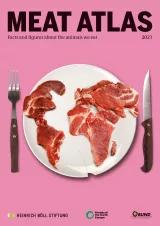
Mobile herders move with their herds or flocks in the remotest of pastures. This form of animal production, known as pastoralism, is economically important and climate-friendly, but it is under severe threat.

The origins of pastoralism can be traced back more than 10,000 years. The practice emerged on the edges of the earliest permanent settlements in the Middle East. It was probably women who first domesticated goats and sheep by raising orphaned lambs and kids. Later, parts of the community started following the flocks to seasonal pastures in the desert. They formed the origins of numerous herding cultures that have ever since produced products such as meat, milk, wool, skins, fertilizer and fuel.
The term pastoralism – the often-mobile, extensive keeping of locally adapted animals on natural bush and grassland – refers to both an economic activity and a cultural identity. There are pastoralists on all continents except Antarctica, particularly in dry, steep, cold or hot areas with few other economic uses. They herd alpacas, camels, cattle, goats, sheep, reindeer, water buffalo and yaks. They inhabit over 26 million square kilometres – more than the combined areas of the USA, China and the European Union.
Although pastoralism mainly uses marginal areas for production, it plays a central role in many countries. In Burkina Faso, over 70 percent of livestock are maintained in pastoral systems; in Niger and Chad it is over 80 percent; in Sudan, Tanzania and Somalia, over 90 percent. In India, the country with the largest number of poor livestock keepers, more than half the milk and 70 percent of the meat comes from pastoral production.
An estimated 200 million people live as pastoralists. The Food and Agriculture Organization of the United Nations (FAO) estimates that they manage about a billion animals. In parts of Africa and Asia that are dry all year round or that have pronounced dry seasons, as well as in the Andes in South America and in the Arctic, these animals are a major source of food and income for many people. In the northern Sahel, pastoralists have a more secure source of both food and income than sedentary farmers in the same region.
For the welfare of their animals, pastoralists accept many hardships and a lifestyle with few material belongings. They base their decisions about grazing areas and routes on traditional knowledge and on their experience with animal behaviour, weather conditions and the nutritional value of the vegetation. Social networks are also important. They are built up over generations and make access to particular grazing areas possible.
Pastoralism is of particular importance to the ecology. The manure distributed by grazing animals plays an important role in the landscape. It sustains insects, which in turn are food for birds, amphibians and reptiles. Grazed pasture is a vital carbon sink.
The pastoral way of life is threatened mainly by the increasing fragmentation of the grazing lands. Rising demand for agricultural products since around 2005 has led to a conversion to cropland and significant investment in industrial farming on the most valuable grazing lands. Only rarely do pastoralists have a say in what happens to the grazing lands they have used for generations. The state often claims ownership of the land for itself and decides on investments and use.
In times of climate change, pastoralists need as many additional options as possible to adapt their mobility and grazing methods to new feed, water and weather conditions. Some scientists assert that pastoralists are among the groups worldwide that are most threatened by climate change. Altered temperature and precipitation patterns are changing feed and water resources and affect the incidence of diseases and the reproductive performance of the animals, and thus the herd size. A decline in animal numbers reduces the food security and income of the herders. Other specialists, on the other hand, regard the mobile economic model and lifestyle as an especially useful way to adapt to the consequences of climate change.
Pastoralism is gaining increasing support from scientists and from UN organizations such as FAO. But the political conditions in many countries are not conducive. Few countries formally recognize the herders’ rights to their grazing lands or integrate them into their rural development policies. For pastoralists, however, land rights that strengthen the communal use of land and the promotion of knowledge sharing among the stakeholders would be the best recipe for sustainable living in times of climate change.

